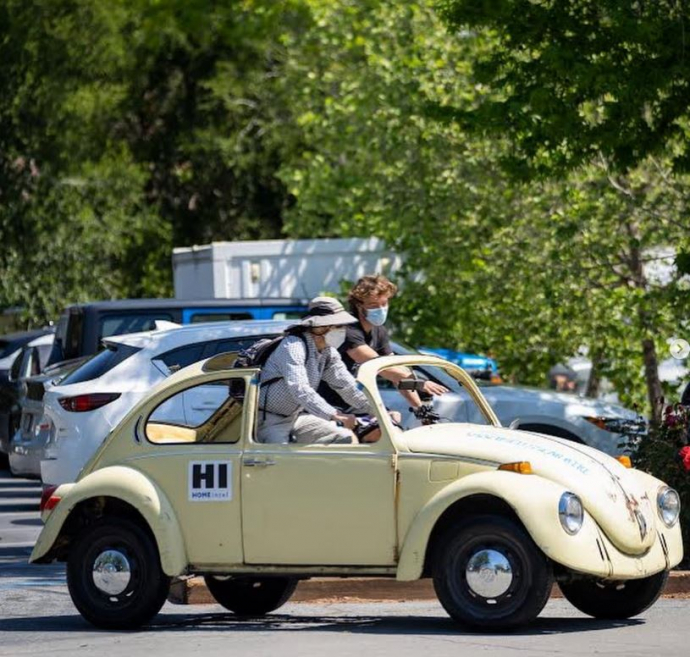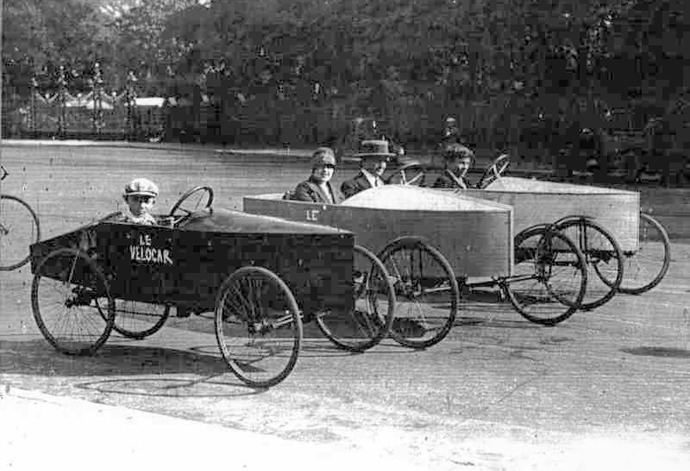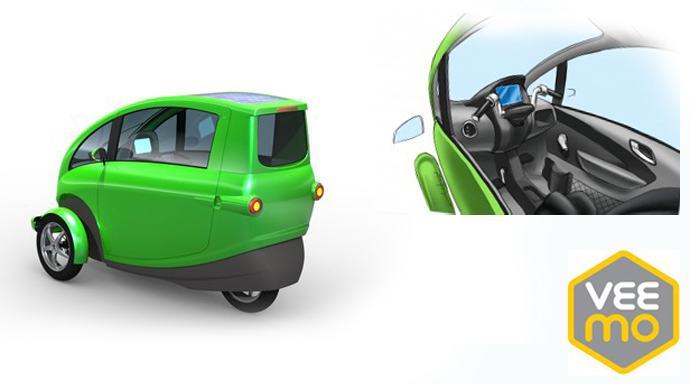
Eric Schmidt runs a car like millions of his fellow Californians, but his 1971 VW beetle is cleaner than most because he himself is the engine. No fossil fuel, no electricity, just human power. The pedal-powered bug weighs about 360 kg empty so, as you can imagine, it moves slowly. But that’s not the point.
Check out Eric’s intagram @use.less.car
Pedal-powered supercars
Eric Schmidt isn’t the first person to cycle something that to the casual observer looks like a real car.

The Fahrradi Farfalla FFX is the work of Austrian artist Hannes Langeder. It’s a supercar that has blood red Ferrari-style bodywork, a super-light chassis and gull-wing doors, but will turns heads for an entirely different reason; the pedal-powered Fahrradi is zero emissions. The team of designers behind the Fahraddi also offer the greenest Porsche to date; a zero-emissions pedal-powered version of the GT3 RS.
 The sporting world’s loss may yet be our gain; VeloMetro has updated the concept of velocars with the latest technology and engineering: human powered, protected from the weather, networked, and assisted by electric and solar power.With petrol prices hovering around £2 per litre, it’s probably a good time to consider the alternatives to driving a conventional car . What if we valued clean air, safe streets, health and vitality above effortless personal mobility? The roads would remain, of course, but instead of cars, most of us might turn to bicycles and human-powered vehicles such as the Veemo.
The sporting world’s loss may yet be our gain; VeloMetro has updated the concept of velocars with the latest technology and engineering: human powered, protected from the weather, networked, and assisted by electric and solar power.With petrol prices hovering around £2 per litre, it’s probably a good time to consider the alternatives to driving a conventional car . What if we valued clean air, safe streets, health and vitality above effortless personal mobility? The roads would remain, of course, but instead of cars, most of us might turn to bicycles and human-powered vehicles such as the Veemo. Many people would not consider using a vehicle like the Veemo because of fears over safety, but what constitutes a ‘safe’ car? There is a perception that large, heavy cars such as SUVs are safe, but any added protection they offer their occupants is very much at the expense of any other road user with which they collide. Human-powered vehicles (HPVs) are designed to operate in urban areas at low speeds, which makes them less of a risk to other road users and less damaging to the road surface.
Many people would not consider using a vehicle like the Veemo because of fears over safety, but what constitutes a ‘safe’ car? There is a perception that large, heavy cars such as SUVs are safe, but any added protection they offer their occupants is very much at the expense of any other road user with which they collide. Human-powered vehicles (HPVs) are designed to operate in urban areas at low speeds, which makes them less of a risk to other road users and less damaging to the road surface.The ethical choice
The ETA was established in 1990 as an ethical provider of green, reliable travel services. Over 30 years on, we continue to offer cycle insurance , breakdown cover and mobility scooter insurance while putting concern for the environment at the heart of all we do.
The Good Shopping Guide judges us to be the UK’s most ethical provider.

Frank
Let’s offer more incentives to reduce car use. Cycling is cool but we need to make it more trendy again 🤠
The ETA
We’d argue that it’s the lack of infrastructure that’s holding back cycling